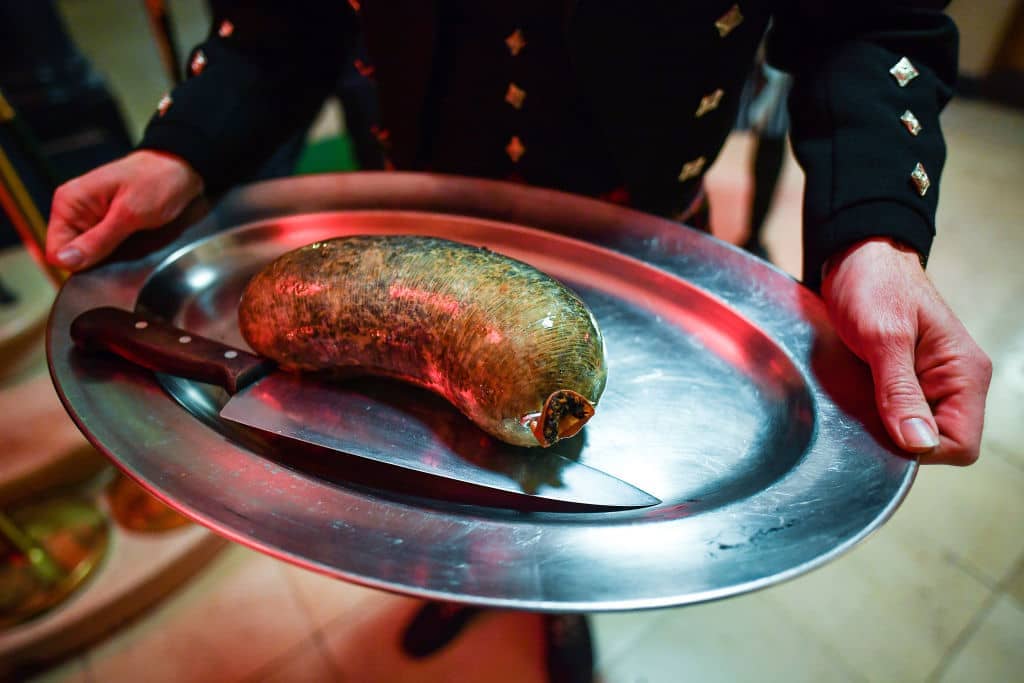As if negotiating a global climate deal into the early hours was not enough, delegates at COP26 have to worry about whether the haggis, neeps and tatties they enjoyed for lunch is destroying the planet. The COP26 menu tells delegates that each serving of the traditional Scottish dish generates 3.4kg of carbon dioxide equivalent (CO2e). It is the heaviest carbon footprint on the COP menu, worse even than the Scottish beef burger (at 3.3kg CO2e).
Unsurprisingly, many climate-conscious delegates in Glasgow are turning their noses up at the Scottish national dish, and not just because they realised it was lamb offal. Perhaps they have good reason to be snobby? As an animal product, haggis takes energy to produce, which is typically generated from fossil fuels. What’s more, sheep are ruminant animals: they burp out methane, which is another greenhouse gas. But is that the whole story?
Many climate-conscious delegates in Glasgow are turning their noses up at the Scottish national dish
Haggis is essentially a by-product, made from a part of the animal that would otherwise go to waste. So isn’t this nose-to-tail approach to eating, practiced for centuries by frugal Scots, exactly the kind of thing we should be doing to save the planet? And if an animal is going to die, surely it makes sense that the whole carcass should be used? Offal is not only highly nutritious but avoids waste. In 2019, a German study found that eating offal could cut emissions from meat because fewer animals would need to be reared overall while still providing nutrition.
But if haggis is bad, then what is a good option for delegates? Perhaps the best meat item on the COP menu is from wild deer. The venison casserole dished up at COP is 1.7kg CO2e and the venison sausage roll is 0.7kg CO2e. If you must eat meat, then wild deer, often culled to make way for reforestation schemes, is lower carbon than cattle and sheep. This might seems like a wise option for carbon conscious delegates. But carbon is not always the only factor.
Take the salmon dished up in Glasgow. The Loch Duart salmon ramen with organic spelt noodles may be low carbon at 0.8 CO2e per kg, but environmental campaigners are unhappy: the Salmon and Trout Association has criticised the company supplying the farmed fish over its environmental credentials, raising questions over whether low carbon salmon really is a better option.
Then there is the question of how carbon footprints are actually calculated. CO2e not only stands for carbon dioxide but equivalent greenhouse gases such as methane. Klimato, the Swedish start-up that measured the footprint of each dish at COP26, uses lifecycle assessments to calculate the figure. This means including all the greenhouse gases generated from farm to fork. However different companies include different elements in their measurements: some might choose to include the energy used to produce the winter feed for the sheep that become lamb offal, and some might not.
This confusion makes it unsurprising that carbon footprinting food has not taken off with the public. A decade ago, Tesco dropped its plan to label all its products with their carbon footprint. Even professor Mike Berners-Lee, one of the first to attempt carbon footprinting food, admits that it is a complicated art. But he argues that even the ‘best estimate’ is a useful way of seeing the impact of your food choices on the environment. Perhaps he has a point. Hopefully the 30,000 delegates at COP26 will leave with a better idea of the carbon footprint of their food, as well as a more enlightened view of Scottish cuisine.






Comments